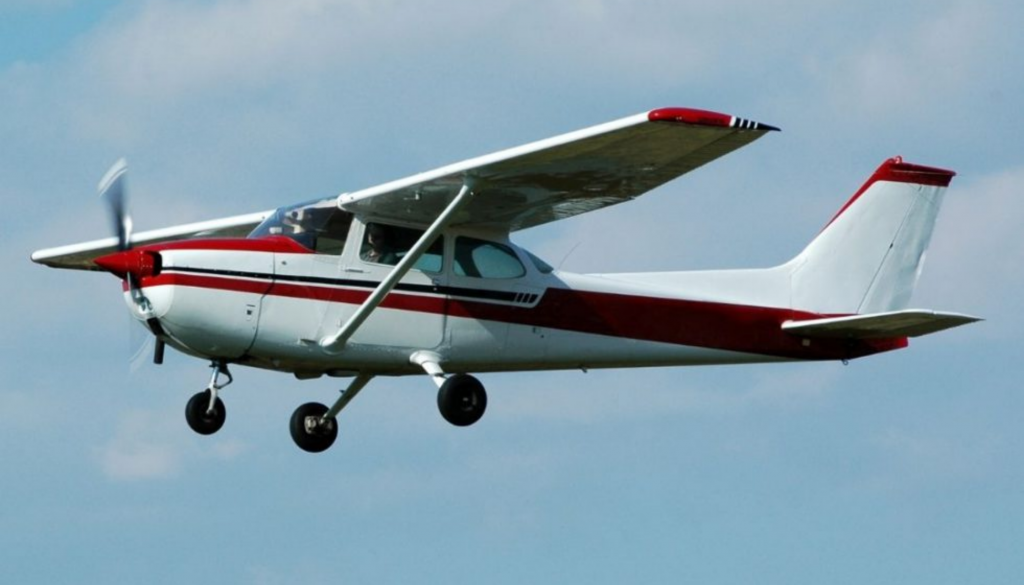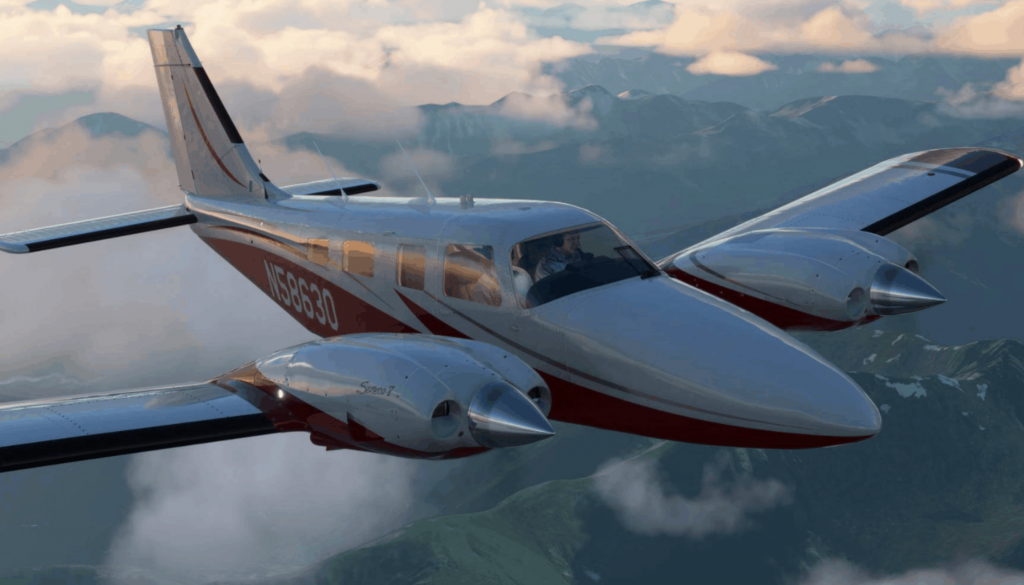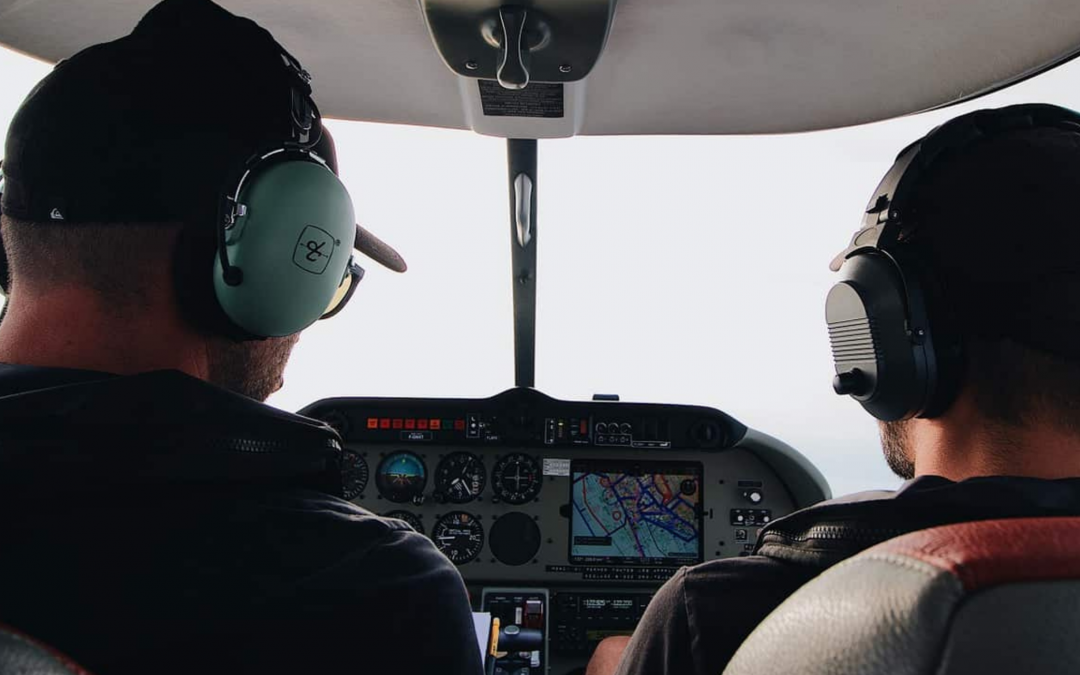Flying with Sierra Flight academy, the 2 aircraft that will make you aquatinted to flying are the Cessna C-172 and the Piper Seneca PA34. Both aircraft are at the pinnacle of their respective fields with the Cessna 172 being one of the most iconic single-engine Training Aircraft ever built. With cutting-edge aerodynamics and instrumentation, the 172 is one of the best platforms for up-and-coming fliers. Popularizing the term kites in the aviation industry, the 172 is beloved for its agile performance all the while giving rookie pilots the confidence they need to find their limits.
With competitive speed and range, the PA34 is one of the most popular twin-engine propeller-driven aircraft put into production. The PA34 has been in continuous production since 1971 making it a very popular platform for not only young fliers but also for veteran pilots who are looking to brush up their skills.

Cessna C172
First introduced in the year 1956, the Cessna C172 was developed based on the tried and tested 170 platform
The Cessna C172, a commonly known as the Skyhawk is an American 4-seater single-engine propeller-driven light aircraft. This popular Training Aircraft is powered by a Textron Lycoming 4-stroke 4-cylinder fuel-injected engine that puts out 180 BHP at 2700 RPM mated to a direct drive gearbox with 2 propellers with fixed pitch giving it a cruising speed of 226 KM/H and a top speed of 302 KM/H. The 172 makes for a great platform for rookie pilots to learn regular maintenance on the aircraft due to its straightforward construction. With a fuel capacity of 56 US gallons, the 172 has an operational range of 1,185 KMS and a service ceiling of 13,000 to 15,000 ft. Outfitted with a robust tricycle style landing gear, the 172 is one of the easiest and the most forgiving aircraft to land which is a boon for any rookie pilot. The 172’s instrument panel features an Airspeed Indicator (Pitot Static), Attitude Indicator (Gyro), Altimeter (Pitot Static), Vertical Speed Indicator (Pitot Static), Heading Indicator (Gyro), and a Turn Coordinator (Gyro).
| Role | Civil utility aircraft |
| National origin | United States of America |
| Manufacturer | Cessna Textron Aviation |
| First Flight and Introduction | June 12 1955, 1956 |
| Number Built | 44,000+ |
| Engine | 360 cu in. Textron Lycoming 4-stroke 4-cylinder fuel injected |
| BHP & Peak Torque | 180 BHP & 55-65 LB-FT |
| Max RPM | 2700 RPM |
| Transmission | Direct Drive |
| Landing gear | Tricycle style |
| Propeller | 2 blade McCauley Propelling system, 76-inch diameter, and a 53-degree pitch |
| Instrumentation | Airspeed Indicator (Pitot Static), Attitude Indicator (Gyro), Altimeter (Pitot Static), Vertical Speed Indicator (Pitot Static), Heading Indicator (Gyro), and a Turn Coordinator (Gyro) |
| Speeds | Cruising speed: 226 KM/H, Top speed: 302 KM/H |
| Altitudes | 13,000 to 15,000 FT |
| Fuel capacity and range | 56 US gallons & 1,185 KMS |
The 172 also holds the record for the world’s longest flight. A modified C172 piloted by Robert Timm and John Cook was flown for 64 days, 22 hours, 19 minutes, and 5 seconds. The historic plane now hangs in the McCarran International Airport in Las Vegas, Nevada setting an exemplary example of reliability. The flight was part of a fund-raising effort for the Damon Runyon Cancer Fund.
A dual-engine, 6-seater touring aircraft with retractable landing gears the Piper Seneca PA34-220T V is based on the legendary PA34 platform that has been in continuous production since 1971. The PA34-220T V is the latest iteration of the PA34. Known for its legendary reliability, range, power, and comfort. The PA34 is the go-to Training Aircraft upgrade for young pilots coming from single-engine Cessnas. It is powered by 2 Turbocharged Continental TSIO-360-RR(s) making 220 BHP each and 699 Nm of peak torque at 2800 RPM. It has a service ceiling of 25,000FT (although most training flights will operate at a maximum of 16,000FT) and it has a top speed of 370KM/H. With a wingspan of 11.9 M, the PA34 is quite maneuverable for its size.

Piper Seneca PA34-220T V (Image Courtesy: aviatorinsider.com)
The PA34 makes for a great platform for pilots to learn the concept of asymmetrical flight where the pilots learn how to operate a twin-engine aircraft with just one of the engines working, it allows the pilots to learn how to compensate for the uneven thrust with elevator and aileron control, a skill they might have to use in commercial jets.
| Role | Civil utility aircraft |
| National origin | United States of America |
| Manufacturer | Piper Aircrafts |
| First Flight and Introduction | April 25 1967, 1971 |
| Number Built | 5,500+ |
| Engine | 2 Turbocharged Continental TSIO-360-RR(s) 4-stroke 6-cylinder fuel injected |
| BHP & Peak Torque | 220 BHP (each) & 699 LB-FT |
| Max RPM | 2800 RPM |
| Transmission | Direct Drive |
| Landing gear | Retractable tricycle style |
| Propeller | 3 blade McCauley Propelling system, contra-rotating fixed pitch |
| Instrumentation | Airspeed Indicator (Pitot Static), Attitude Indicator (Gyro), Altimeter (Pitot Static), Vertical Speed Indicator (Pitot Static), Heading Indicator (Gyro), and a Turn Coordinator (Gyro) |
| Speeds | Cruising speed: 370 KM/H, Top speed: 378 KM/H |
| Altitudes | 25,000FT |
| Fuel capacity and range | 122 US gallons & 1,534 KMS |
Being a part of the Sierra flight academy gives you access to these legendary Training Aircraft making it a great platform for you to learn how to fly and eventually get to your goal of becoming a commercial pilot. Click here to learn more about SFA&ATP.

You completed certain nice points there. I did a search on the matter and found nearly all folks will consent with your blog.cartier engagement rings
I absolutely love your website.. Excellent colors & theme.
Did you build this site yourself? Please reply back as I’m hoping
to create my own personal website and would like to know where you got this from or what the theme is named.
Appreciate it!
Useful info. Lucky me I found your website accidentally,
and I’m surprised why this accident didn’t took place in advance!
I bookmarked it.
Everything is very open with a very clear clarification of the challenges.
It was truly informative. Your website is very helpful.
Many thanks for sharing!
Hi, I do think this is an excellent website. I stumbledupon it 😉 I will come back
yet again since i have book marked it. Money and
freedom is the best way to change, may you be rich and continue to help other
people.
Hello! Do you use Twitter? I’d like to follow you if that would be okay.
I’m absolutely enjoying your blog and look forward to new updates.